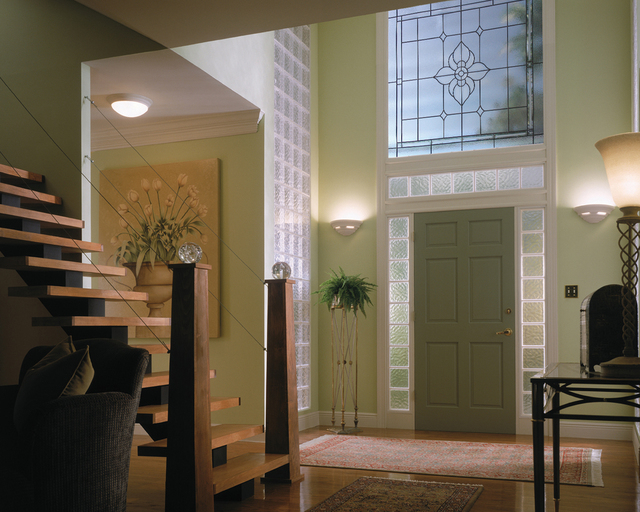Design around the block for more light
Utilizing natural light, while still maintaining privacy, need not be a design stumbling block in the home. Once relegated largely to commercial applications, the ease of installing clear block systems as residential windows and walls can be as smooth as glass, says Roger Murphy, president of Hy-Lite, a U.S. Block Windows Company in Pensacola, Fla., and a leading manufacturer of acrylic and glass-block systems since 1988.
“A modern design aesthetic in today’s homes lends itself well to the use of acrylic and glass blocks,” Murphy said. “Today, people are thinking outside the box, using these block systems in unconventional ways — not just as windows.”
Glass and acrylic blocks are prized for providing varying degrees of privacy and light transmission at the same time. In the past, the use of glass blocks in homes was largely limited to basement windows. Now, glass blocks and their acrylic counterparts are illuminating every room in the house.
Homeowners might become glassy-eyed when discussing design options, since glass and acrylic blocks come in myriad different colors, types and textures, but there are differences between the two products, Murphy says.
“There is much more design freedom when dealing with acrylic blocks, as opposed to glass ones,” he said. “The most obvious difference is that glass-block design shapes are limited to right angles. Acrylic blocks have greater design flexibility because we can achieve architectural shapes such as arches, ovals, octagons and triangles in the factory.”
Glass blocks can measure up to 4 inches thick or be twice as deep as a single-pane window. Traditionally, glass blocks were individually mortared together like bricks, resulting in a heavy, permanent and immovable fixture.
Today, preassembled glass-block windows are available in a wide variety of ready-to-install sizes. Hy-Lite manufactures preframed, 2-inch-thick glass blocks that are incorporated into a substrate, which protects the blocks from cracking. Murphy says glass-block systems are also heavier than acrylic ones, so you will need to install them on a firm foundation to ensure your home can support the additional weight.
Conversely, acrylic-block windows can be used in both fixed and operable applications, as they are up to 70 percent lighter than traditional glass-block windows, Murphy says. Awning, casement and basement hopper-style windows are some of the most popular window styles that both open and close.
Because acrylic is a transparent thermoplastic made of synthetic resins, these blocks are easier to manipulate during the manufacturing process. In addition to different sizes and shapes, acrylic blocks can be easily colored or tinted to block the sun’s rays. Extra insulating layers added during the manufacturing process can make acrylic blocks one-third more energy efficient than traditional glass-block windows, Murphy says.
“For our products, a block assembly of about a 47-inch square is just under $715 for glass block and just over $600 for acrylic,” Murphy said. “Of course, you can find architectural salvage glass blocks, but you will need to factor in the time and labor of mortaring them into place.”
Although glass and acrylic blocks are technically transparent, different surface patterns — waved, ribbed, stippled, dimpled or gridded — all distort views and refract light. Privacy patterns in the blocks eliminate the need for window treatments and are especially popular in bathrooms. They are ideal as not only exterior windows, but also as room dividers, kitchen backsplashes, shower enclosures and part of stairway railings.
n In the entryway, sidelights made of glass or acrylic block make for a warm welcome, while not compromising the security of the space.
n In an open floor plan, a glass- or acrylic-block wall or partition defines and separates spaces in a light and bright way.
n In the kitchen, glass- or acrylic-block sections inserted between the countertop and the wall cabinets are a bright idea for a backsplash, while an island need not be unchartered territory when framed by blocks.
n In the shower, glass or acrylic blocks are as durable and low-maintenance as ceramic tile, while providing varying degrees of privacy in which sunlight — and water — can stream.
n On the stairway, glass or acrylic blocks can be a contemporary take on conventional spindles without compromising safety, while brightening up an otherwise shadowy stairwell.
Murphy says the use of glass or acrylic blocks in a home can flood the inside with outside light.
“The use of glass or acrylic blocks allows homeowners to go more natural,” he said. “Not only are they able to enjoy more natural light, they have the privacy to do so.”


















